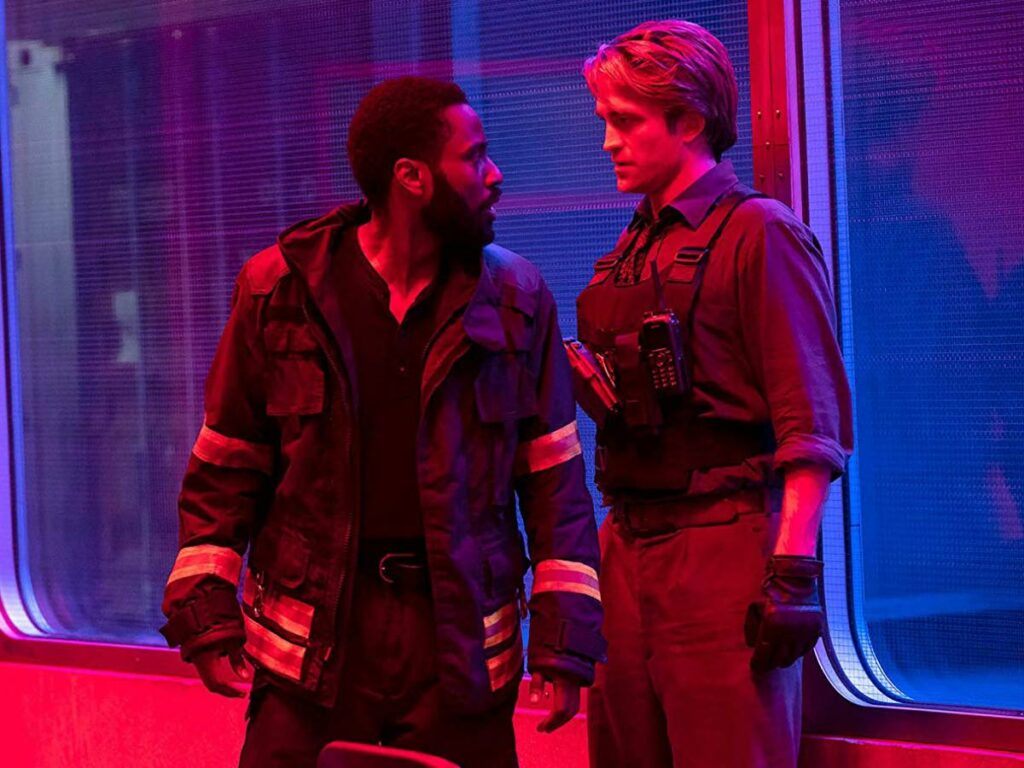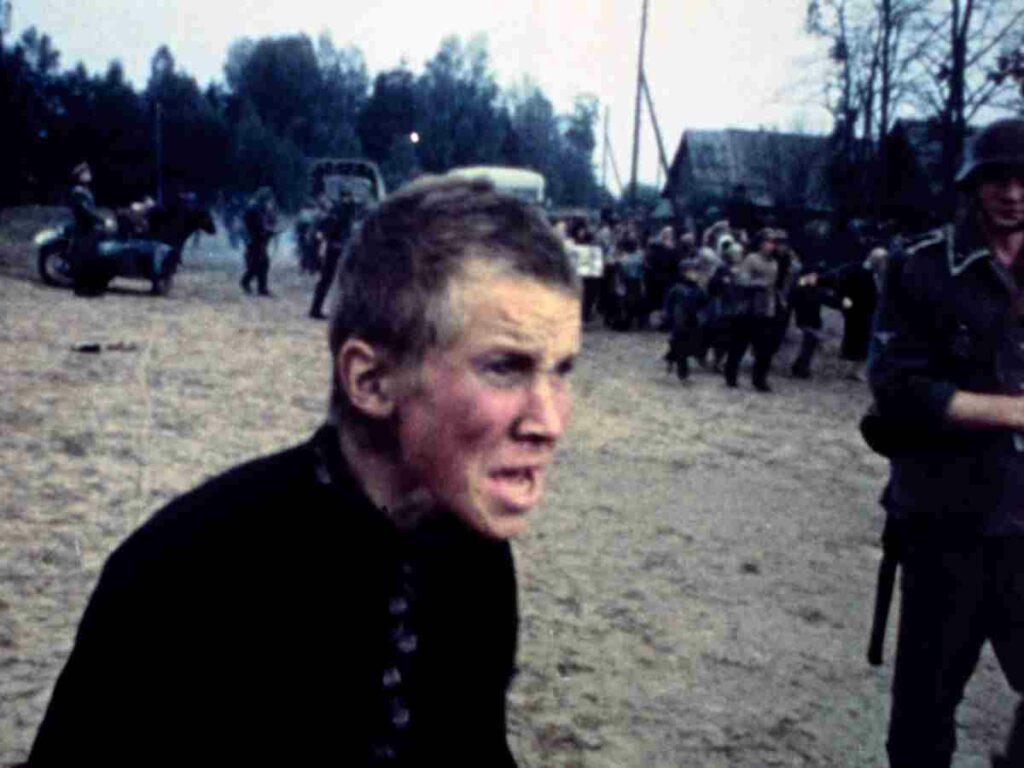Christopher Nolan is notorious for being a director/screenwriter whose films yield endless interpretations over and over. The more one tries to unravel the central foundation of any particular film of his, the more details emerge with every subsequent rewatch. Of course, his latest film, Tenet, is no different. In many ways, it combines the tropes and flourishes we have come to expect in Nolan films — a high-concept sci-fi reality, subjective flow of space and time, altered states and doubles. Tenet revolves around The Protagonist. No, that’s not us being lazy, he really is named just The Protagonist.
So much for specificity, Nolan.
The Protagonist (John David Washington), a CIA agent, is sent on a quest to retrieve an object and manipulate the flow of time to save the world from ending in the future. After having mused over the film’s concept for over a decade, it reportedly took Nolan five years to write the screenplay. Of course, the film is a labor of love, and makes you work hard to decipher its code. Let’s take a look at its screenplay and break it down.
Please note that this is a subjective analysis of the screenplay only. While I will be discussing the narrative structure and character development, the internal mechanics of the scientific concepts applied in the film will not be elaborated in depth. For a working understanding of the same, I’ve referred to a wonderful article by Vulture.
First Act: Set-Up

The film begins with an extraction mission in the Kyiv Opera House. When The Protagonist’s cover is blown, he is saved by a man who appears to be using inverted bullets. Upon capture, he commits suicide with a cyanide pill, which is then revealed to be a loyalty test and he is recruited by a mysterious organization, Tenet. His mission is to prevent an attack on the past, from the future. He is directed to a scientist, Barbara (Clemence Poesy), who helps him understand the mechanics of time travel. Objects can have their entropy reversed, thus causing them to travel backwards through time. They find inverted bullets, which are traced to Tenet member Priya Singh (Dimple Kapadia) in Mumbai. There, The Protagonist meets his handler, Neil (Robert Pattinson). Together, they zero in on a suspect, Russian oligarch Andrei Sator.
I like to joke that Nolan films of late, especially Tenet, are fueled by exposition. So much so, that the key takeaway of this act is exposition supplanting the narrative structure. Sci-fi films in general, and especially Nolan productions, introduce the audience to a new, hyperreal setting. While the filmmakers might know the rules of this fictional universe, the audience doesn’t. So, it falls to the first act of the film to actively establish some dos and don’ts — the ground rules, if you will.
Tenet utilizes an approach to time travel that is arguably unseen in cinema. Instead of using a piece of machinery, or unexplained powers to gloss over the mechanics of time travel, the film takes the route of inverting people and objects so that they can approach the flow of time in a different manner.
The approach that the first act might take to providing new information sets the tone for the whole film. Of course, in Tenet’s case, it helps that The Protagonist is just as new at this as we are. Hence, we more or less learn what he learns, when he learns it. Both inside and outside the narrative, the first act becomes crucial in familiarizing the characters as well the audience with the texture of the film.
Second Act: The Confrontation

This is where things start getting tricky, as Tenet brings in crucial characters, and even more upside- down science jargon. Neil and The Protagonist plan to get to Sator through his wife Kat (Elizabeth Debicki), who is trapped in an abusive marriage. A few forged paintings, a quick conspiracy and a few fights later, he and Sator strike an uneasy bargain. The job is to retrieve a case of Plutonium-241. However, they are ambushed by Sator who is inverted, and is holding Kat hostage. A tense confrontation ensues where Sator gains the case, Kat is shot with an inverted bullet and the trio are rescued by Tenet operatives led by Ives (Aaron Taylor Johnson) just in time.
It is revealed that Sator wants to assemble an algorithm to end the world with the artifacts, and he is dying from cancer. Kat, Neil and The Protagonist enter a turnstile for inversion and travel to the past.
The second act of the film, as with most narratives, is highly packed with information that needs to be out of the way before the climax can take place. The spy thriller-feel of the first act is replaced by a heist scenario where our heroes must pull off the capture of a desired object, otherwise known as a MacGuffin.
Nolan has also employed this structure in films like Inception. And because exposition is essential before any heisting can begin, The Protagonist and Neil drone away about the particulars of traveling through time in a turnstile, and healing an inverted wound. A lot is said and done that might feel excessive to the narrative, but sets up pay-offs in the climax. Hence, this act mostly creates a high- stakes atmosphere for us to feel invested in the climax.
While I recognize the need for the audience to be provided constant information, the barrage of complex physics that the characters bring up and dismiss just as casually occasionally works against the film. It gives one the impression that the how is more important than the why. Viewers tend to become obsessed with finding plot holes in fictional scientific breakthroughs than appreciating and critically questioning the narrative. In this aspect, I think the second act proves a little near-sighted, trading flashy, if consequential, details for the big picture.
Third Act: The Resolution

Convinced that Sator from the future (inverted Sator) will try and activate the algorithm in the past, on their last vacation, Kat goes to stop him, while Ives, Neil and The Protagonist travel to Stalsk-12 to stop him from obtaining the artifacts. They launch a temporal pincer movement — two teams attack, one travelling forward in the future and one backward. The Protagonist is saved by a mysterious figure again, who takes a bullet to the head. As Kat stalls, and finally kills Sator, the mission in Stalsk-12 is also successful. It is revealed that Neil was the one who saved The Protagonist twice — once in Kyiv and once in Stalsk-12 — and that he was recruited in the future by The Protagonist, who founded Tenet.
The Protagonist reassures Kat of her son’s safety and kills Priya, who wanted to kill Kat to “to tie up loose ends”.
I’m certainly not exaggerating when I say that this climax leaves the viewers with a lot to think about. And by “a lot”, I mean positively questioning the laws of space and time. Of course, on a narrative level, it’s all kosher. Bad guy is stopped, good guys succeed at their mission, and goodbyes are said.
Except it is not as simple as that. The film circles back to the very beginning, with the good guys literally travelling back in time to a week before so that they can intercept events with newfound information. The Protagonist and Neil literally fight inverted versions of themselves, as referenced in the second act, and Kat gets to be the free woman jumping off her husband’s boat. All of these are satisfying payoffs to set-ups from The Confrontation, which is a neat way to end a story that asks its viewers to risk massive suspension of disbelief.
I found the final act at its strongest when it centered the relationships between the characters, and lent them much-needed emotional depth. Nolan has often been criticized for not giving audiences enough time to fully invest in the characters, and Tenet does not do much to absolve itself of that accusation. However, the friendship between Neil and The Protagonist, helped along by an easy chemistry and charisma between both their actors, feels rich and full of personal history. It is interesting that the beginning of The Protagonist’s history with Neil is the end of their friendship for the latter, creating a believable sense of loss when Neil sacrifices himself in The Protagonist’s past.
One gets the sense that Nolan has created a self-mutating narrative that is not so much concerned with the particulars of the event than it is with the idea of a cyclical, archetypal story. As the end seamlessly blends into the beginning, one can see that this is a self-fulfilling prophecy that ends with the involved parties knowing the parts they are supposed to play, and playing it to perfection. Much like a puzzle box, the pieces fall into place after a few hundred trial and errors.
Conclusion
Of course, I am not, by any means, the first to ponder and write about what Tenet is all about. I’m sure I won’t be the last either. Tenet is a polarizing film. Longtime fans, or even novices familiar with its creator’s reputation will either love it enough to passionately defend it. Or fall into the bottomless trap of finding out inconsistencies. I must admit, for me, it was neither. I’ve long believed the magic of cinema is watching familiar stories told through innovative methods, and Tenet certainly delivers. Just like sci-fi fans don’t watch Star Wars for a lesson on interstellar travel, I didn’t watch Tenet with the intention of furthering my understanding of entropy and time reversibility.
After all, this is a story with a main character named The Protagonist. There is only one way this story could go, and that’s the one thing we could all see coming.




